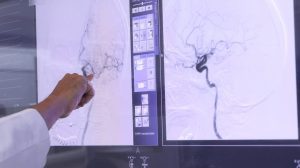NEW YORK (Reuters Health) – For children with bleeding disorders who experience head trauma, cranial CT scans are usually not necessary if symptoms are absent, investigators report in The Journal of Pediatrics online January 14.
Dr. Lois K. Lee, at Children’s Hospital, Boston, Massachusetts, and colleagues note that intracranial hemorrhage (ICH) is a potentially life-threatening complication for children with congenital or acquired bleeding disorders, and that “there is evidence that these children are at increased risk for sustaining ICH even after minor blunt head trauma.”
To determine the rate of CT imaging after blunt head trauma in children with or without bleeding disorders, and the prevalence of ICH in these children, the authors analyzed data on 43,904 such cases evaluated in 25 emergency departments. Among this cohort, 230 children had a bleeding disorder – 129 of them with hemophilia. All of the patients with bleeding disorders and 98% of those without had apparently minor trauma indicated by a Glasgow coma scale score of 14 or 15.
Cranial CT scans were obtained for 80.9% of the children with bleeding disorders and 35.3% of those without, for a rate ratio of 2.29.
“Of the patients with GCS scores of 14 to 15 for whom a CT was obtained, an ICH was present in 2 of 186 children with bleeding disorders (1.1) compared with 655 of 14, 969 children without bleeding disorders (4.4%),” Dr. Lee and colleagues report.
Both of the children with bleeding disorders who had positive CT scans presented with signs and symptoms of ICH.
Given these results, the researchers conclude, “CT imaging may not routinely be needed in the evaluation of children with bleeding disorders after blunt head trauma, particularly in those without signs and symptoms suggestive of ICH.”
J Pediatr 2011.




